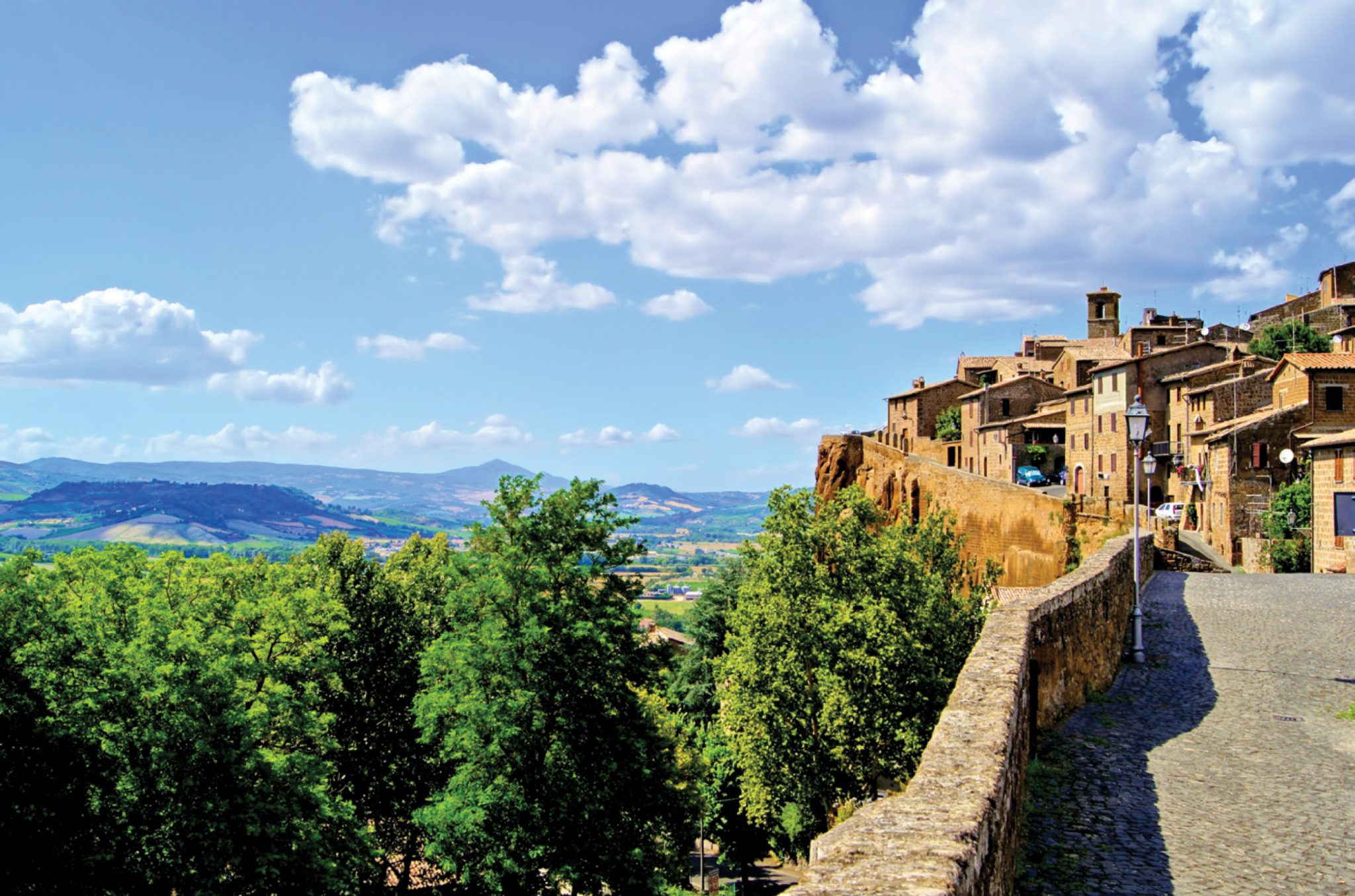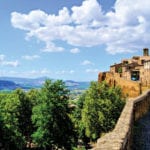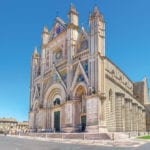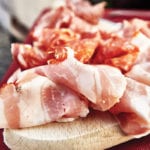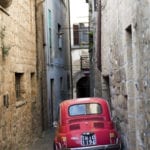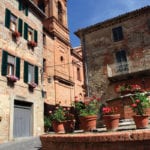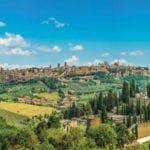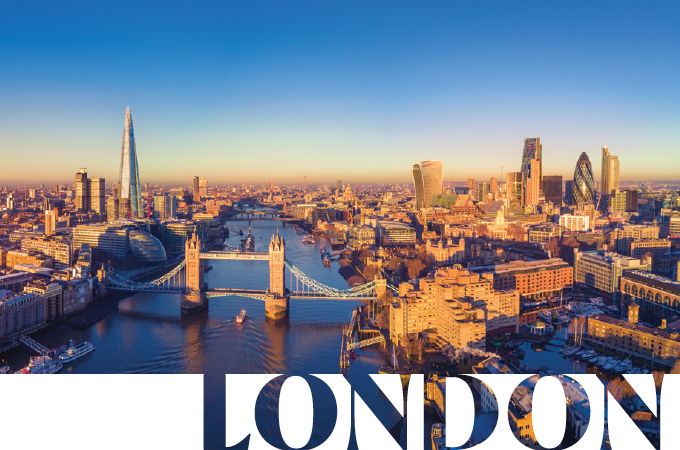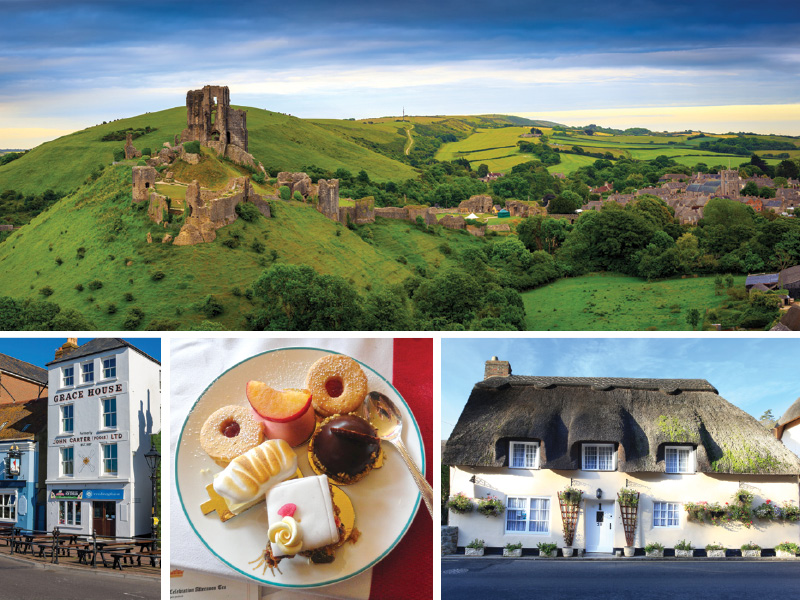This being Italy, you should expect every town to be the site of a miracle, a sainthood or some other monumental event in religious history. The cathedral town of Orvieto in Umbria is where the 1263 Miracle of Bolsena occurred, when a priest who questioned transubstantiation bit into a wafer only to watch blood pour out. That prompted Pope Nicholas IV to declare it a miracle the next year, launching the church feast of Corpus Christi, which Catholics celebrate 40 days after Easter. Meanwhile, a grand cathedral was built in Orvieto to replace the tiny church originally on that site. (And, of course, to encourage the Middle Ages version of tourism, the pilgrimage).
Today, more than 750 years later, visitors still come to see the cathedral at Orvieto, considered the finest example of Italian Gothic architecture. The imposing structure, with its gilded façade and mosaics, served as a papal seat equal to Rome during the Middle Ages. The sides and interior are stripes of pink and cream marble, reflecting the influence of the Moors, whose empire reached into what is today southern Italy.
The cathedral is renowned for frescoes by Luca Signorelli, whose evocative human depictions predated Michelangelo’s by 30 years. One of the most important organs in Italy also resides here and is played only twice a year: at Easter and, no surprise, during the Festival of Corpus Christi. Orvieto is in an area settled by the Etruscans 3,000 years ago, and you can still see the remnants of a necropolis (city of the buried) on the hillsides since they believed in rebirth. It is thought they arrived here from central Asia 3,000 years ago, bringing a highly developed culture of religion, jewelry craft, art and agriculture. Many of the accomplishments attributed to the Romans, who conquered them, can be linked directly to the Etruscans. And the name of the neighboring region, Tuscany, comes from the word ‘Etruscan.’
In addition to its cultural heritage, Orvieto is blessed with volcanic soil rich in minerals that feed its omnipresent vineyards and olive groves. The lovely white and pink stone façades you see everywhere are made of ‘tufa,’ a volcanic product of the region’s seismic activity throughout the millennia. This is the center of Italy, where two tectonic plates meet, and it is home to volcanic thermal springs like the renowned Saturnia in nearby Tuscany.
A major grape-producing region, Orvieto is a ‘Slow Food city,’ where time-honored methods of production are a source of pride. Sheep grazing in the gently rolling fields provide milk for the area’s famed pecorino cheese, and local sunflowers are the source of sunflower oil. As we passed the endless olive groves, our tour guide regaled us with stories about ‘green gold’ (olive oil) and ‘black gold’
(truffles), also indigenous to the region and, as it was late fall, harvested recently.
We were whisked off for a lunch of local ingredients (there really is no other kind in Italy) created by Lorenzo the bilingual Etruscan chef. He greeted us at his Ristorante Zeppelin, where he trains budding chefs from all over the world on the finer points of things like porchetta (the regional roast pork delicacy) and pasta fresca (fresh pasta). He whipped up dough with 2.5 pounds of flour, salt and 13 eggs (or seven, if you’re using goose eggs like his nonna did).
Then he rolled it using the traditional mattarello, a long, narrow rolling pin. After effortlessly creating an elastic, 6-foot pancake, he sliced it into tagliolini, tagliatelle and pappardelle with the showmanship of P.T. Barnum. The cooked strands—simply adorned with olive oil and truffles—became our meal, along with antipasti platters of prosciutto, grana padano (the local hard cheese), olives, focaccia and fresh basil. Orvieto Classico (the local wine) added to the merry mood, proving some local wisdom: Orvieto may be the land of Popes, but Orvieto Classico is the Pope of wines.
if you go …
eat
Fresh pasta and truffles are among the area’s specialties. Look for housemade pastas, fresh salume and that most delectable of Umbrian treats, porchetta, made from the meat of small, acorn-eating pigs. The area’s fowl specialties include game hen with truffles and chicken with olives. You can’t go wrong with classic Umbrian dishes like ombrichelli del Funaro (spaghetti-like pasta in a sauce of artichokes, mushrooms, tomatoes and sausage) and grigliata mista (mixed grilled meats including sausage, suckling pig and lamb).
stay
Palazzo Piccolomini is a converted 16th-century palace in the center of town. While it’s not exactly palatial today, it does have modern amenities and some charm, and it’s well situated. Ripa Medici is a bed and breakfast, also in the center of town, with period furnishings.
play
The cathedral, or duomo, is the central attraction. The exterior has mesmerizing relief panels that depict scenes from the Bible, some with Dantean details. The far right panels form a Last Judgment cautionary tale that is quite graphic in its expressions of human suffering. You can spend lots of time closely examining the hundreds of scenes. Inside, frescoes by the most acclaimed painter of the time, Luca Signorelli, adorn the walls, as does a fresco of the Miracle of Bolsena by Ugolino di Prete Ilario. Supposedly, Michelangelo used the Signorelli frescoes as studies for his own Last Judgment masterpiece in the Sistine Chapel.
shop
This area is known for colorful ceramics, many adorned with olives, fruits and florals. These are beautiful and costly, and most have the name Orvieto on them for authenticity. If you like something, don’t bother shopping around; prices seem to be the same in all the stores.






